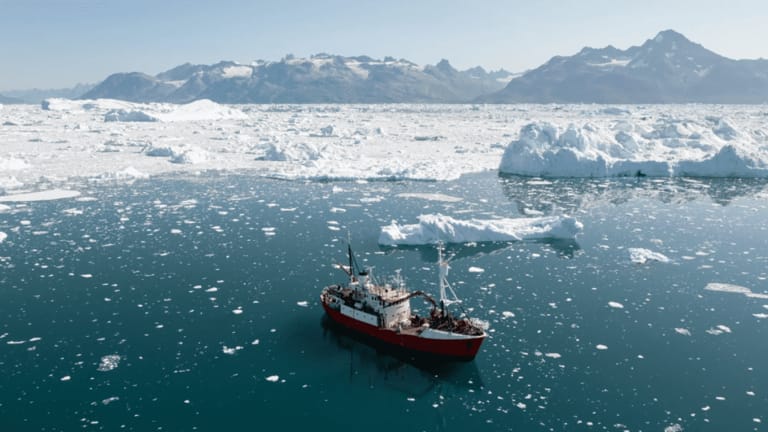
In a dramatic and unforeseen event, scientists have uncovered that over 90 billion litres of water—enough to power Niagara Falls for nine continuous hours—erupted from beneath Greenland’s massive ice sheet in a violent surge that had gone undetected for years.
Detailed in a recent Nature Geoscience study, the phenomenon sheds new light on the destructive and concealed processes by which melting ice is altering the Arctic landscape.
The flood originated in summer 2014, when a massive subglacial lake beneath the remote northern region of Greenland suddenly emptied. Thanks to advanced satellite imaging and 3D modeling, researchers were able to reconstruct how 90 million cubic meters of water forced its way upward—through solid layers of ice—and burst onto the surface in a colossal eruption.
In just 10 days, the water had carved out an 85-meter-deep crater, covering two square kilometers. Even more astonishing was the destruction left behind: towering 25-meter-high ice blocks, deep fissures, and a scoured field of ice debris spread across 385,000 square meters—an area twice the size of Central Park.
What baffled scientists most was the direction of the flow. Rather than draining downward, the pressurized meltwater surged up through the ice sheet, defying expectations. “We initially thought something was wrong with our data,” said Dr. Jade Bowling of Lancaster University, lead author of the study. “We had never seen anything like this before.”
This type of subglacial flood, known as a “glacial lake outburst,” had never been observed in this fashion under Greenland’s ice. These events are not currently accounted for in existing climate models, raising urgent questions about their role in ice sheet stability and sea-level rise.
As climate change accelerates melting at the surface, experts now worry that such sudden and massive releases of water could become more frequent—and far more difficult to predict.
“This shows just how little we know about the plumbing system beneath ice sheets,” added Dr. Amber Leeson, also of Lancaster University. “To accurately predict the future of Greenland’s ice and its impact on global sea levels, we need to better understand these hidden, high-pressure systems under the ice.”
